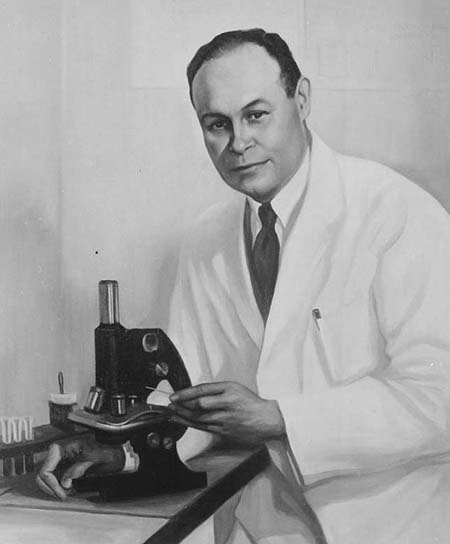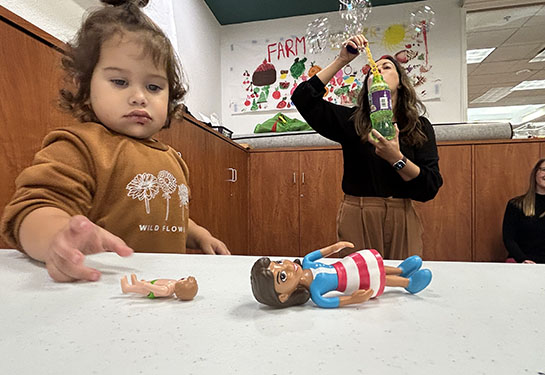Black History Month spotlight: Celebrating Charles R. Drew
America’s blood bank systems – and ours here at UC Davis Health – might operate very differently if not for African American surgeon and researcher Charles R. Drew.

Fabrizio Saraceni, director of the Department of Pathology and Laboratory Medicine, said Drew’s research changed the world of medicine. Most notably, he demonstrated how to separate whole blood into red cells and plasma, and how they could be stored for longer period of time.
“Prior to his discovery, blood could not be stored for more than two days because of the rapid break down of red blood cells,” Saraceni said.
February is Black History Month, an opportunity to celebrate the achievements of African Americans like Drew. During this month as well, UC Davis Health is facing a blood shortage that puts Drew’s work on blood banks in sharp contemporary focus. (This Q&A with Sarah Barnhard, medical director, Transfusion Services, offers more information on the current shortage and how UC Davis Health ensuring that it has blood products needed for patients day-to-day. For several weeks, the American Red Cross has been reporting a severe blood shortage nationwide.)
Creating blood banks
Born in 1904, Drew grew up in Washington, DC, where his academic interests and talents led him toward a career in medical science. But in the early 20th century, it was difficult for African Americans to pursue most medical careers. Drew eventually attended medical school at McGill University in Montreal, Canada, where he pursued his interests in blood transfusion medicine. His studies there set the groundwork for his later innovative work in blood bank science.
After graduation, Drew joined the faculty at Howard University College of Medicine. He then and he completed a fellowship at New York’s Presbyterian Hospital while further distinguishing himself as the first African American to earn a doctorate of medical science from Columbia University.
The defining apex of Drew’s career – and his greatest contribution to humankind – was his development of a national blood bank. The early work toward this began in 1940, during World War II. He was asked by Great Britain, which desperately needed blood and plasma to treat military and civilian injuries, to direct the Blood for Britain project. In doing so, he supervised the collection of an estimated 14,500 pints of plasma for the British.
In 1941, the American Red Cross appointed Drew as the director of the first Red Cross blood bank, which put him in charge of providing blood to the U.S. Army and Navy. He established organizational standards, regulated production techniques, and ensured that safety protocols were followed. One of his key innovations was mobile blood donation stations, later called “bloodmobiles.”
Drew’s work eventually became complicated by issues of race. U.S. military policy at the time banned African Americans from donating blood, which Drew publicly condemned as unscientific. Though this would be revised to allow Blacks to make blood donations, the policy still prohibited giving blood from non-white donors to white members of the armed forces. Drew continued his critiques of this discriminatory medical practice and in 1942 he resigned his Red Cross position. In 1950, after working in higher education and advocating educational opportunities for African Americans, he died following a tragic automobile accident in North Carolina.
Enduring legacy
Saraceni said Drew’s advocacy for racial equality had a major impact.
“Through his efforts, the military changed its policy and began to allow African-Americans to donate blood,” said Saraceni, who began his health career with the Air Force, where he was trained as a specialist in blood banking.
“As part of my training, we learned the history of military blood banking and Dr. Drew's legacy. During World War II, at the military’s request, Dr. Drew helped the Red Cross initiate a national blood program that collected 13.3 million pints of blood for use by the armed forces. His work saved millions of lives and paved the path for the military to establish its own blood program,” Saraceni said.
Shareef Valentine, a senior supervisory labor and diversity-inclusion strategist at UC Davis Health, said, “Dr. Drew’s work is instrumental in every hospital’s ability to provide life-saving treatments that involve the use of blood plasma.”
He noted, “This has been an enormous impact for not only hospitals, but for Armed Services members in combat, law enforcement officers and firefighters, and the many careers that play a role in keeping our country and communities safe.”
Charles Drew’s work on blood banks and transfusions left a powerful legacy of impact on health care organizations, patients and employees, including those who learn through the Charles R. Drew University of Medicine and Science in Los Angeles, named after him and founded in 1966.
Drew left an enduring legacy. In addition to the Charles R. Drew University of Medicine and Science, in 1976 the National Park Service designated the Charles Richard Drew House in Arlington County, Virginia, as a National Historic Landmark in response to a nomination by the Afro-American Bicentennial Corporation. In 1981, the United States Postal Service issued a 35¢ postage stamp in its Great Americans series to honor Drew.
There’s also the Charles Richard Drew Memorial Bridge in Washington, D.C., the USNS Charles Drew, a dry cargo ship of the United States Navy, and in 2002, scholar Molefi Kete Asante listed Drew as No. 32 on his list of the 100 Greatest African Americans.



